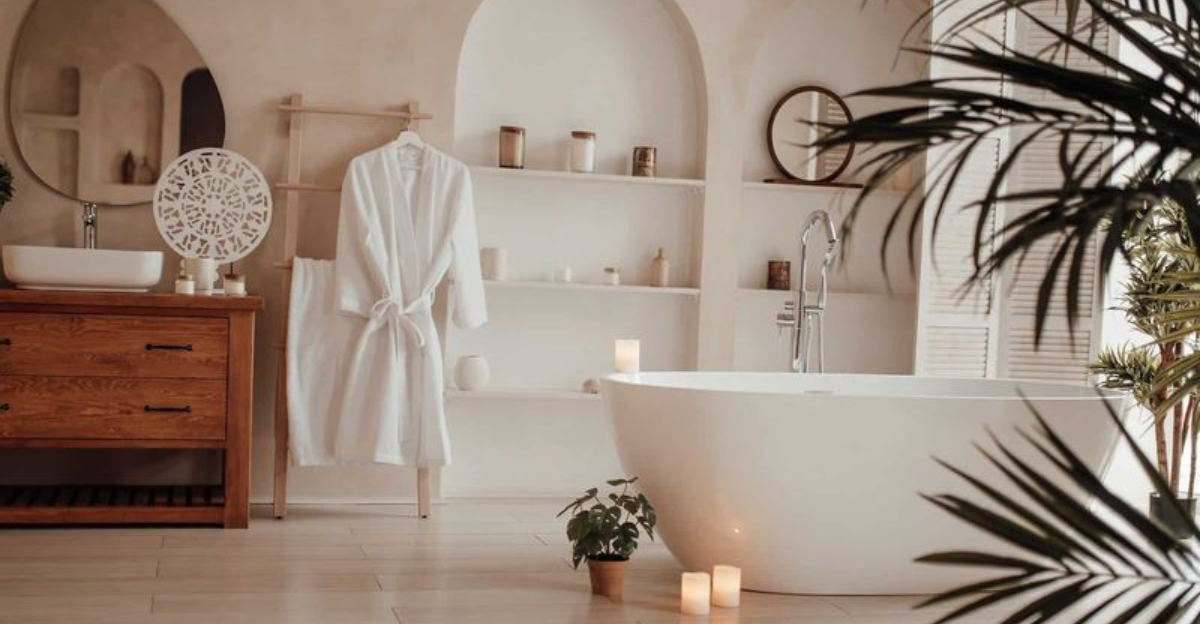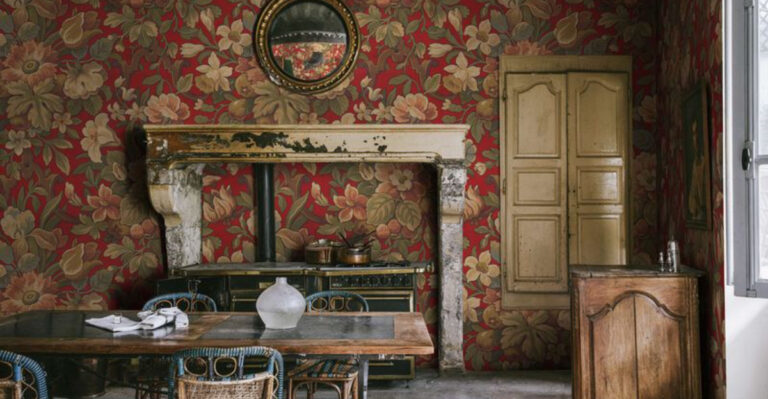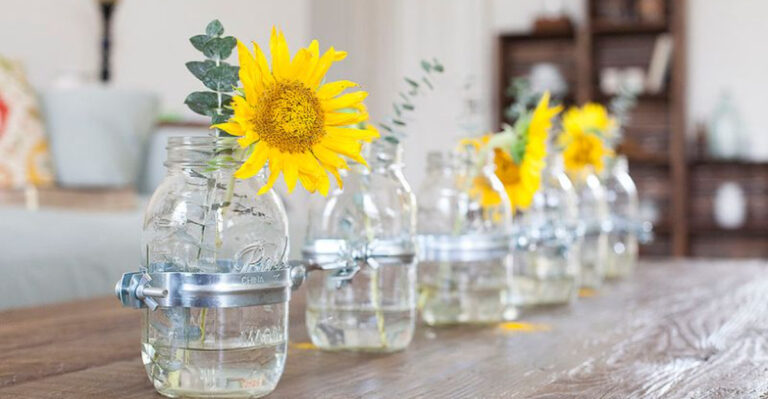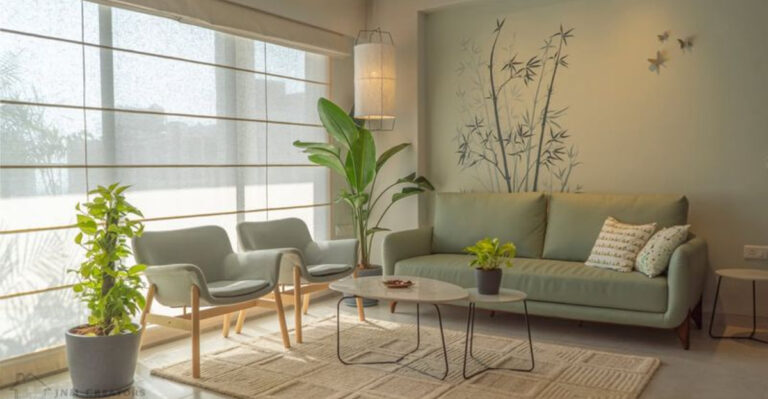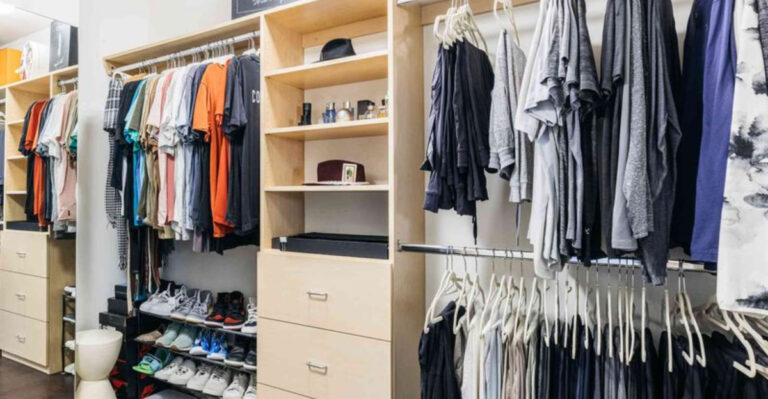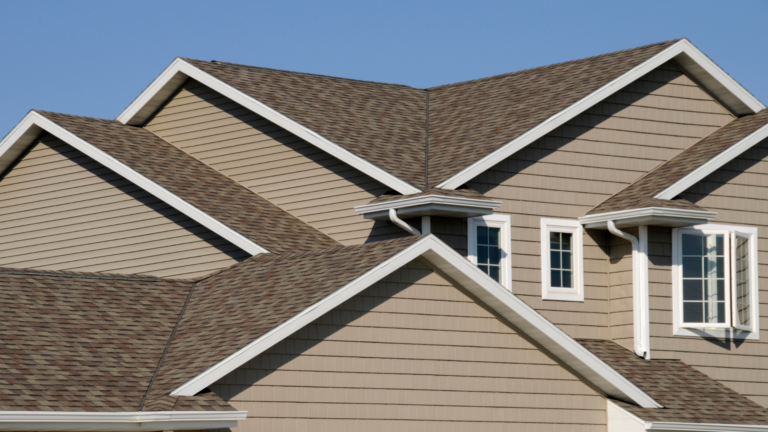18 Anxiety-Proof Spaces: Designing Interiors That Heal The Mind
Lately, I’ve realized just how much our surroundings affect how we feel. After long, stressful days, I want my home to be the one place where I can actually breathe.
That’s why creating spaces that feel calm and grounding has become such a priority for me. With a few thoughtful tweaks, like softer lighting, cozy textures, and less clutter, I’ve started turning each room into a little escape from the chaos.
It doesn’t take a full renovation to make a difference. If you’re craving more peace at home, these simple design ideas might be exactly what you need.
1. The Meditation Corner
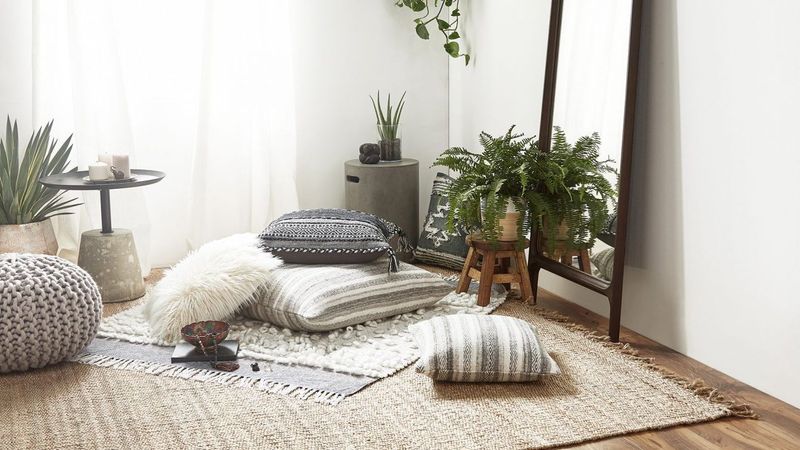
Sometimes all you need is a tiny slice of zen in your busy world. Pick any quiet corner and transform it with soft floor cushions, a small plant, and maybe a candle or two.
Natural textures like bamboo mats or wool throws add instant calm vibes. Keep it simple though because clutter ruins the peaceful mood faster than you can say namaste.
Your phone stays far away from this sacred spot, obviously.
2. Sweet Bedroom Walls
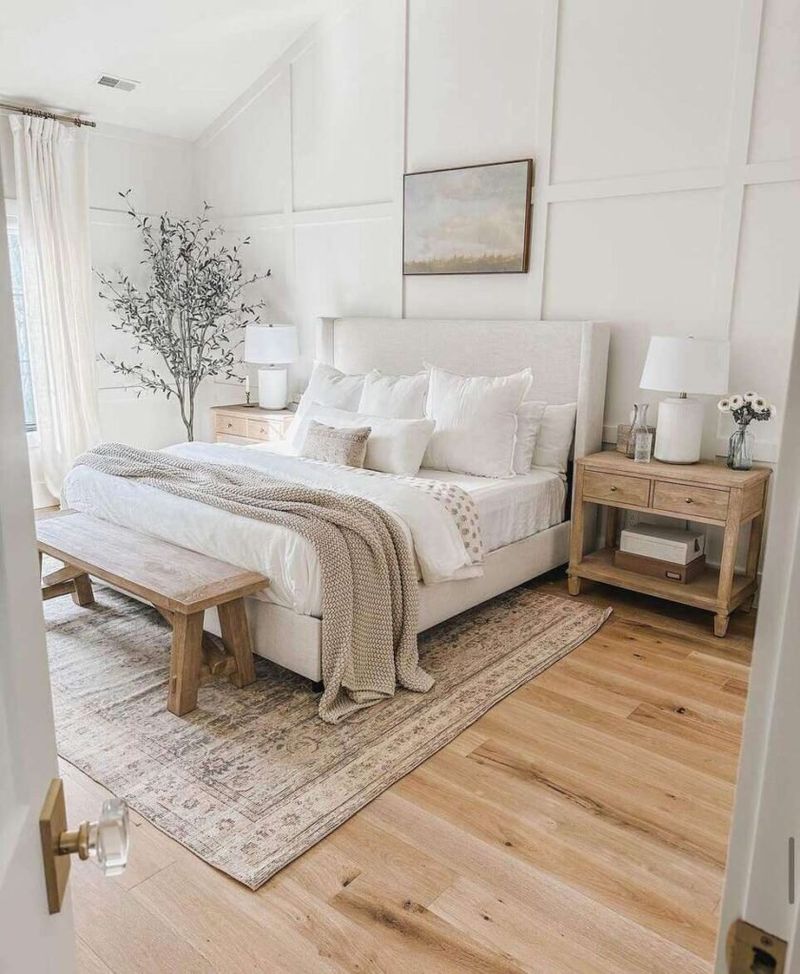
Bold red walls might look amazing on Pinterest, but they won’t help your anxious brain wind down at night. Soft blues, gentle greens, or warm beiges work like magic for creating sleepy vibes.
Think of colors that remind you of nature because your brain automatically associates them with safety and calm. Paint stores even have special sections for calming colors now.
Your bedroom should feel like a cloud, not a circus.
3. Living Room Lighting
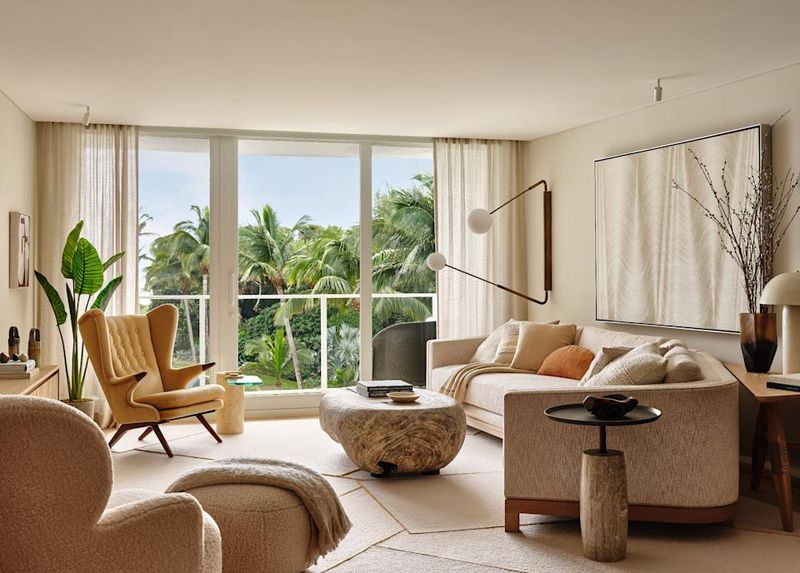
Harsh overhead lights are basically anxiety triggers disguised as home fixtures. Multiple soft light sources create a warm glow that helps your nervous system chill out.
Table lamps, floor lamps, and even some strategically placed candles work wonders. Dimmer switches are your best friend here because you can adjust the mood throughout the day.
Your eyes and your stress levels will thank you for ditching the interrogation room lighting.
4. Kitchen Herbs

Growing herbs on your kitchen windowsill brings nature indoors while providing instant aromatherapy whenever you need it. Lavender, rosemary, and mint are particularly good at calming frazzled nerves.
Plus, you get to cook with fresh ingredients, which makes even the most anxious person feel accomplished. The act of watering and caring for plants also provides a mindful break from daily stress.
Fresh basil beats expensive candles any day.
5. Bathroom Spa Vibes
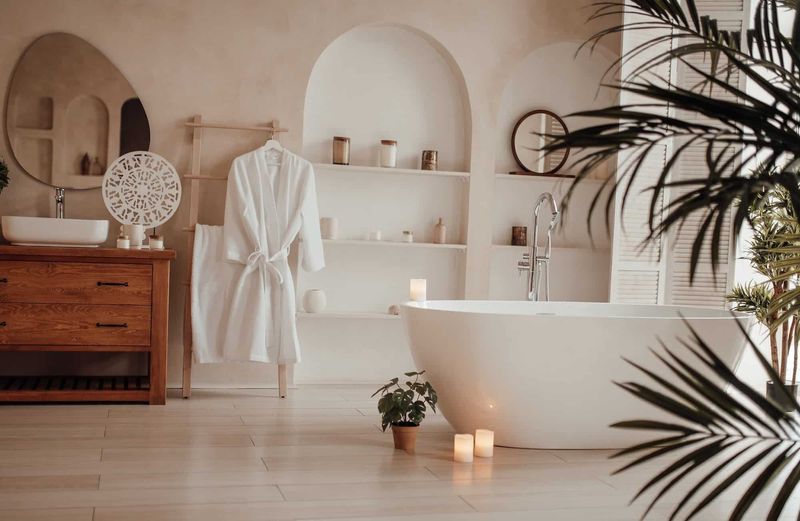
Your bathroom doesn’t need a complete renovation to become a stress-busting sanctuary. Add some fluffy white towels, a small plant that thrives in humidity, and an essential oil diffuser.
A wooden bath caddy turns your regular tub into a mini spa experience. Even if you only have a shower, some eucalyptus hanging from the showerhead creates instant aromatherapy.
Hot water plus calming scents equals instant anxiety relief.
6. Reading Nook

Books are natural anxiety busters, but you need the right setup to fully escape into another world. A comfortable chair with good back support, a soft throw blanket, and proper lighting create the perfect storm of coziness.
Position your nook near a window if possible because natural light during the day helps regulate your mood. Keep a small basket nearby for your current reads and maybe some herbal tea.
Your favorite fictional characters are waiting.
7. Entryway That Says Welcome Home
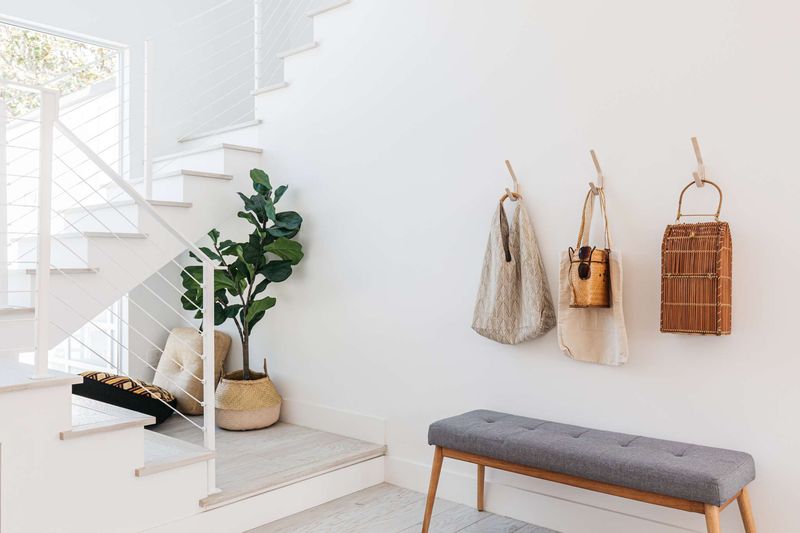
How you enter your home sets the tone for everything that follows. A cluttered, chaotic entryway keeps your stress levels high even after you close the door behind you.
Add a small bench where you can sit and breathe for a moment, some hooks to keep coats organized, and maybe a small plant to greet you. A mirror helps check that your day didn’t leave any visible damage.
Transition spaces matter more than you think.
8. Calm Office Space
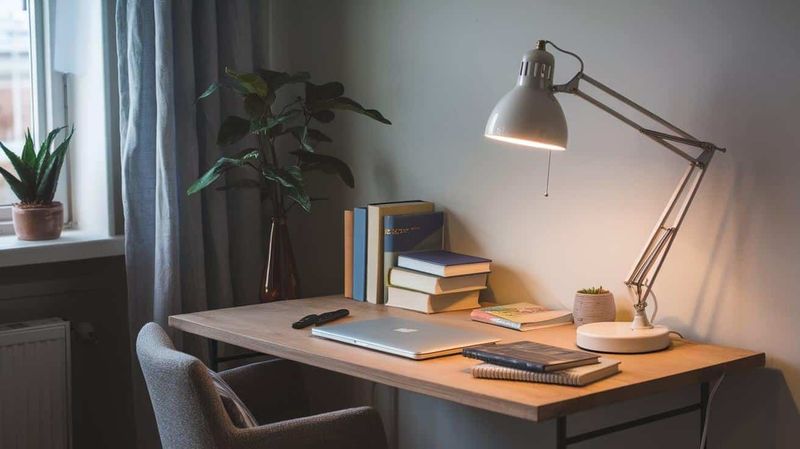
Working from home can either be a blessing or a curse for anxiety levels, depending on how you set up your space. Natural materials like wood help ground you, while plants provide visual breaks for tired eyes.
Keep your desk clear except for absolute essentials because visual clutter creates mental clutter. Good lighting prevents eye strain, which can trigger headaches and increase stress throughout the day.
Your productivity and sanity depend on getting this right.
9. Living Room Textures
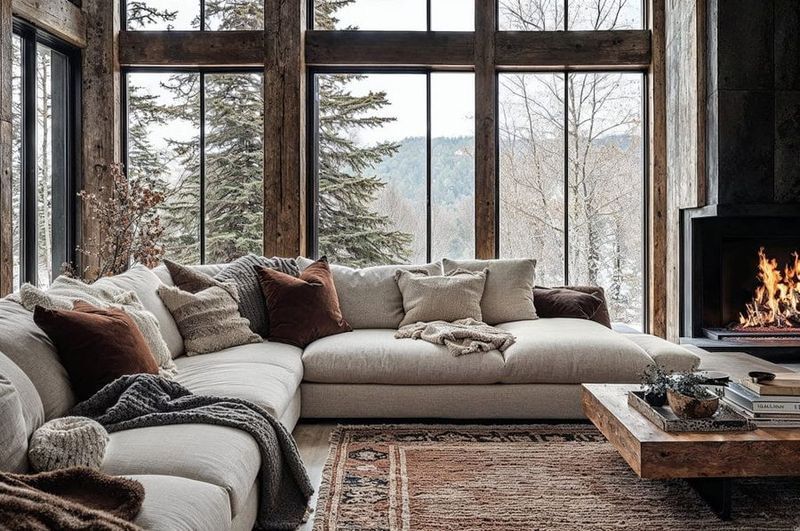
Soft textures have an almost magical ability to lower stress levels because they remind our brains of comfort and safety. Chunky knit throws, velvet pillows, and plush rugs invite you to relax the moment you see them.
Mix different textures but stick to a similar color palette to avoid overwhelming your senses. Natural materials like wool, cotton, and linen work better than synthetic fabrics for creating genuine comfort.
Your living room should feel touchable, not just pretty.
10. Bedroom Temperature Control
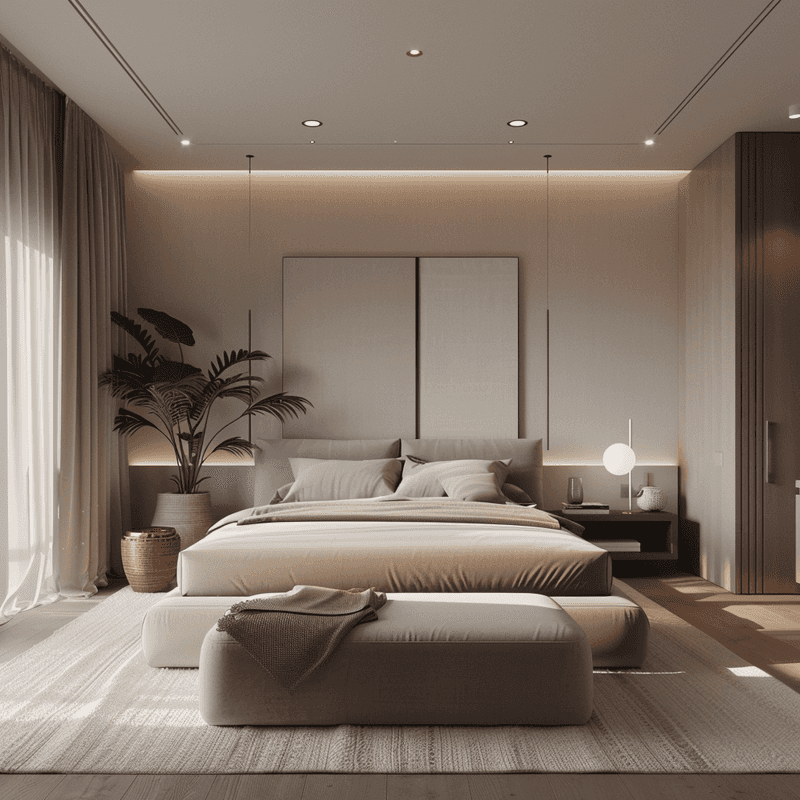
Nothing ruins sleep faster than being too hot or too cold, and poor sleep makes anxiety worse the next day. Keep your bedroom between 65-68 degrees Fahrenheit for optimal rest.
Blackout curtains help regulate temperature while blocking out stress-inducing light. Breathable bedding materials like cotton or bamboo prevent night sweats that can wake you up feeling panicked.
A ceiling fan provides white noise while keeping air circulation steady throughout the night.
11. Mindful Dining Room

Eating while stressed messes with your digestion and makes anxiety symptoms worse. Create a dining space that encourages you to slow down and actually taste your food.
Comfortable chairs make you want to linger over meals instead of rushing through them. Soft lighting helps your nervous system shift into rest mode, which is essential for proper digestion.
Leave phones and tablets in another room because mindful eating requires your full attention.
12. Closet Organization
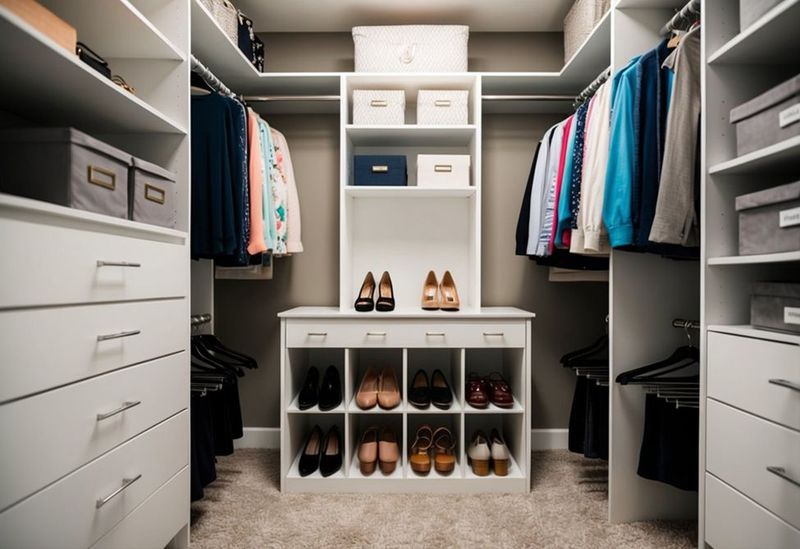
Decision fatigue is real, and a chaotic closet can trigger anxiety before your day even begins. Organize clothes by type and color so you can find what you need without digging through piles.
Good lighting in your closet prevents the frustration of grabbing what you think is black but turns out to be navy blue. Storage bins keep accessories organized and easy to locate.
Morning stress starts in your closet, so make it work for you.
13. Balcony Garden Nature
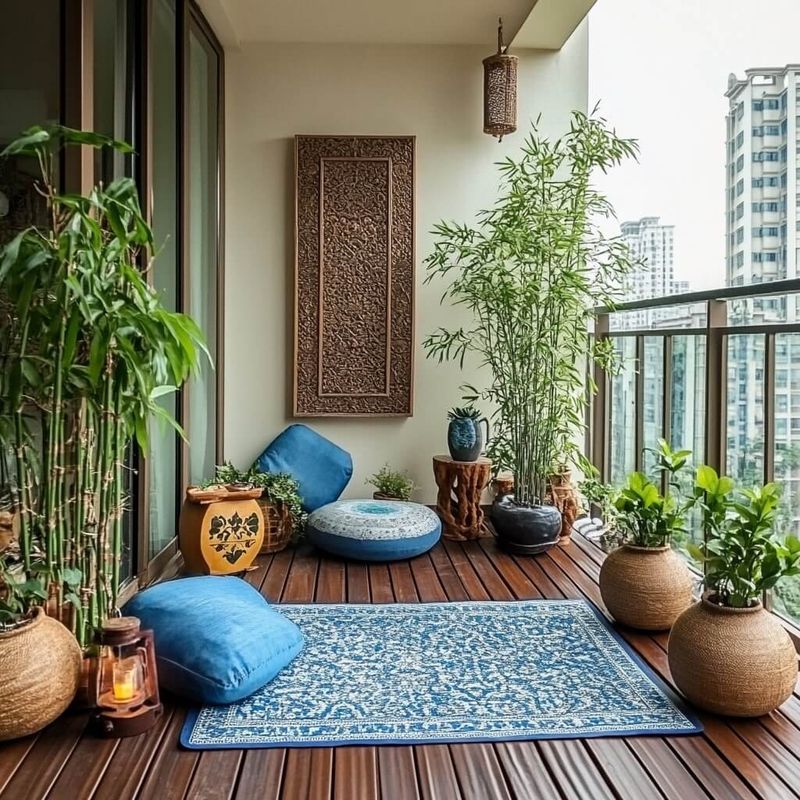
Even the tiniest balcony can become an anxiety-fighting oasis with the right plants and setup. Growing things gives you a sense of purpose while connecting you to natural cycles.
Choose plants that match your climate and maintenance level because dead plants create more stress than no plants at all. Add some comfortable seating and maybe string lights for evening relaxation.
Fresh air and greenery work better than any expensive therapy session sometimes.
14. Hallway Art That Lifts Your Spirits
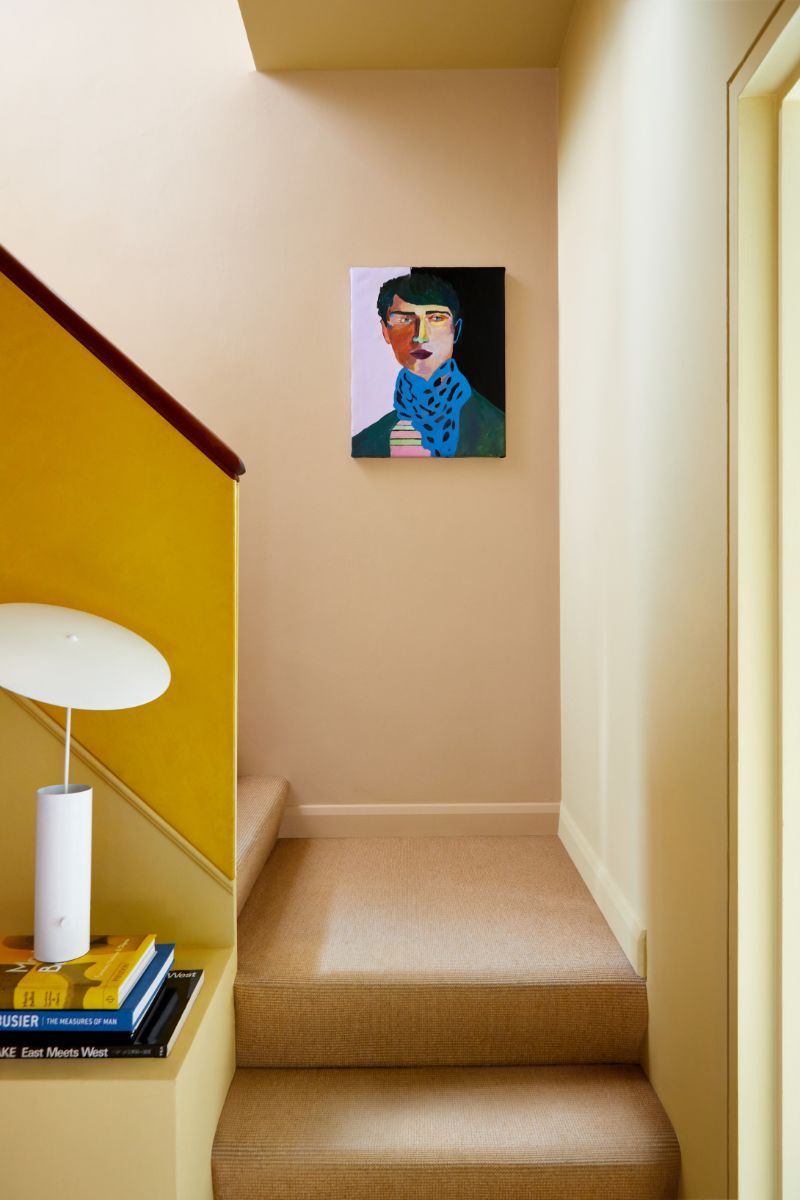
Hallways are transition spaces that can either boost your mood or drain your energy depending on what you put on the walls. Choose art that makes you smile or feel peaceful.
Family photos remind you of love and connection, which naturally reduces anxiety levels. Avoid anything too stimulating or chaotic because hallways should provide visual rest between rooms.
Your walls should tell a story of what matters most to you and your mental health.
15. Restful Guest Room
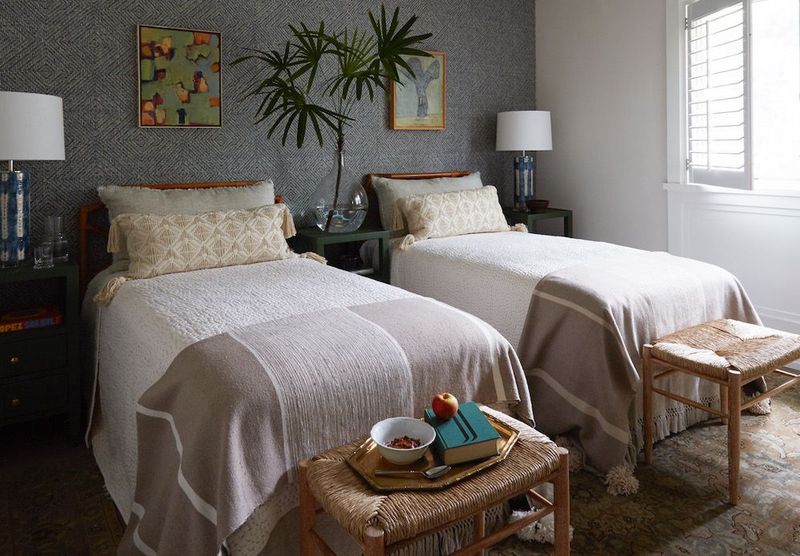
Creating a truly restful guest room shows care for others while giving you a backup retreat space when you need extra calm. Neutral colors work for everyone and promote better sleep.
Stock the bedside table with water, a small snack, and some light reading material. Extra blankets in different weights accommodate various comfort preferences and sleeping temperatures.
When guests sleep well in your home, the peaceful energy benefits everyone who lives there.
16. Relaxing Laundry Room

Laundry rooms often become dumping grounds for everything we don’t want to deal with, which creates background stress every time you walk past. Good organization and lighting transform this necessary evil.
Add some storage solutions to keep supplies organized and surfaces clear. A small plant or two makes the space feel less like a dungeon and more like a functional part of your home.
Even mundane tasks feel better in a well-designed space.
17. Basement Retreat
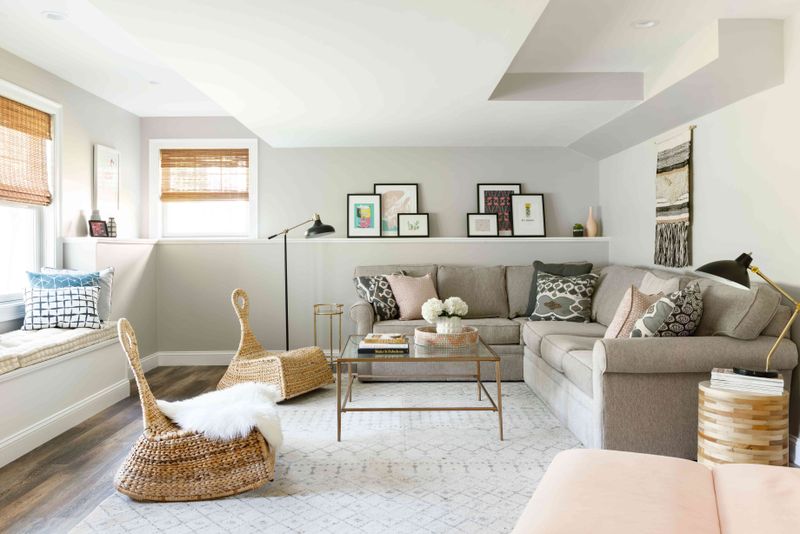
Basements get a bad reputation, but they can become amazing anxiety retreats with the right approach. Good lighting is absolutely essential because darkness triggers stress responses in most people.
A dehumidifier prevents that musty smell that makes spaces feel unhealthy. Warm colors on the walls and comfortable seating create a cozy cave vibe instead of a creepy dungeon feeling.
Underground doesn’t have to mean uncomfortable if you plan it right.
18. Calm Attic Space
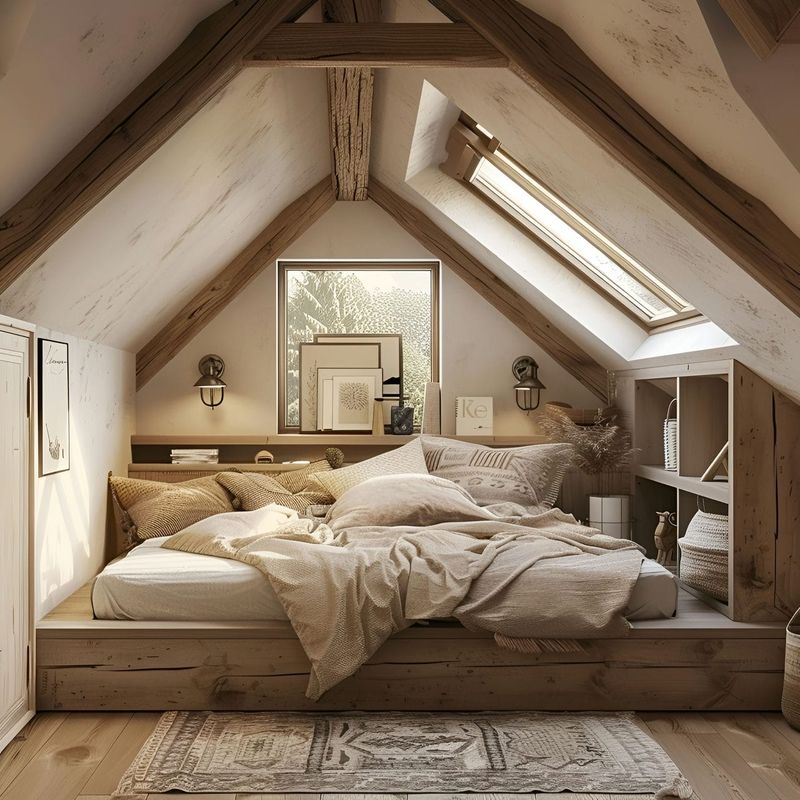
Attics offer unique opportunities for creating private retreat spaces because they’re naturally separated from household noise and activity. Skylights provide natural mood-boosting light while maintaining privacy.
Good ventilation prevents stuffiness that can trigger claustrophobic feelings. Use the sloped ceilings to your advantage by creating cozy nooks with comfortable seating and soft lighting.
Sometimes the best anxiety relief comes from getting away from it all, literally and figuratively.

